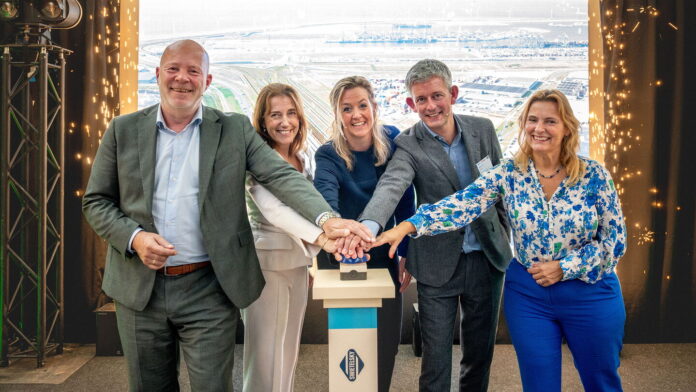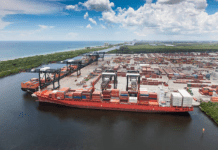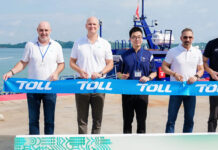
During a festive gathering on the Maasvlakte, Port of Rotterdam Authority, ProRail, and Swietelsky Rail Benelux approved construction of the Maasvlakte Zuid Railway Yard.
This occurred in the presence of representatives from the Municipality of Rotterdam, the Ministry of Infrastructure & Water Management, and the European Parliament.
The project’s first phase involves constructing the initial bundle of six sidings suitable for 740-meter trains and various connections to existing rail infrastructure. This bundle will be commissioned in mid-2027.
The remaining three bundles will be implemented in phases depending on rail freight transport forecasts in the period after 2027.
Following preparatory work by Swietelsky, construction has now officially begun on the first bundle and various connections as part of the new Maasvlakte Zuid Railway Yard.
The EMZ construction is necessary to facilitate rail freight transport growth from the Maasvlakte to the European hinterland.
Container throughput in the port of Rotterdam is expected to continue increasing in coming years. Container import and export is crucial for companies and consumers in both the Netherlands and Europe and is thus essential to European prosperity.
To continue efficiently transporting the ever-increasing container flow to and from the hinterland, Port of Rotterdam Authority, ProRail, and the Ministry of Infrastructure & Water Management are investing in sustainable and efficient rail infrastructure.
The Maasvlakte Zuid railway yard is suitable for freight trains with 740-meter length. That is considerably longer than the current standard length of approximately 600 meters. The longer trains offer numerous advantages.
They allow more containers to be transported in a single trip. This means fewer train movements, lower emissions, and reduced costs per tonne of freight.
Various infrastructure projects are planned until 2040 to improve rail accessibility to the Maasvlakte.
The Port Authority is implementing these projects in phases in collaboration with ProRail and the Ministry of Infrastructure & Water Management.
Beyond constructing the new railway yard with a maximum of four bundles of six tracks each, the total development also includes electrification of the distribution triangle and outer contour, modification of the C2 curve, and construction of two through tracks.





